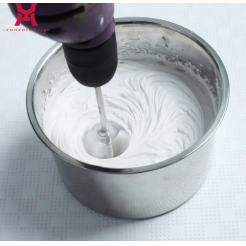c10-homoserine lactone
Product Description
https://www.fanbo-medical.com/products/c10-homoserine-lactone.html
C10-HOMOSERINE LACTONE CAS: 177315-87-6
N-decanoyl-l-homoserine lactone is a member of the N-acyl-homoserine lactone family.
Chinese Name:癸酰-高丝氨酸内酯
CAS number:177315-87-6
Molecular Formula:C14H25NO3
Product Purity:≥98%
What is C10-homoserine lactone?
C10-homoserine lactone is a chemical compound often associated with quorum sensing in bacteria. Quorum sensing is a communication system used by certain bacteria to coordinate their behavior and activities based on population density.
C10-homoserine lactone is a specific molecule involved in this process. It consists of a 10-carbon acyl chain linked to a homoserine ring, forming a lactone. This molecule serves as a signaling molecule that bacteria release into their environment. When the concentration of C10-homoserine lactone reaches a certain threshold, it can trigger specific responses in the bacterial community, such as the regulation of gene expression, the production of virulence factors, or the formation of biofilms.
Functions
C10-homoserine lactone (C10-HSL) has several functions and applications primarily related to its role in quorum sensing in bacteria.
Quorum Sensing: C10-HSL is a signaling molecule used by certain bacteria to communicate with each other. It allows bacteria to sense their population density in a given environment. When the concentration of C10-HSL reaches a critical threshold, it triggers specific responses in the bacterial community. These responses can include changes in gene expression, the production of virulence factors, or the coordination of group behaviors.
Regulation of Gene Expression: C10-HSL can regulate the expression of genes within bacterial cells. This regulation is essential for coordinating activities such as biofilm formation, antibiotic resistance, and pathogenicity. By modulating gene expression, bacteria can respond to environmental cues and adapt their behavior accordingly.
Virulence Factor Production: In pathogenic bacteria, C10-HSL can induce the production of virulence factors. These factors enable bacteria to colonize host organisms and cause infections. Understanding how C10-HSL influences virulence factor production can be valuable in developing strategies to combat bacterial infections.
Biofilm Formation: C10-HSL plays a role in the formation of biofilms. Biofilms are complex communities of bacteria encased in a protective matrix of extracellular substances. Biofilms can adhere to surfaces, including medical devices and implants, leading to infections and complications. Understanding how C10-HSL is involved in biofilm formation can help in the development of strategies to prevent or disrupt biofilms.






